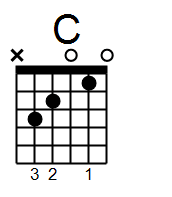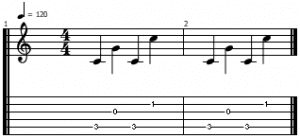Last update 5/2/2024
One of the great things about the guitar is that it can be a very dynamic and expressive instrument. A great example of this is when playing a good acoustic guitar. Sure, it can sound great when doing some Pete Townsend-style mega strumming (does the intro to ‘Pinball Wizard’ ring a bell with anyone?), …but it certainly doesn’t have to be that bombastic.
Table of contents
How to play fingerstyle Guitar
Let’s take a good overall look at playing fingerstyle: some classic examples, what sets it apart from strumming chords, and some tips and exercises to get yourself off the ground.
Classic songs that have used fingerstyle guitar
In the proper context, fingerstyle guitar can create a different sonic landscape from songs composed mainly of strummed chords. If you think about it, some of the most beautiful and delicate songs ever written have been played using the fingerstyle approach on the guitar.
Countless examples are proof positive of that, from a large part of Paul Simon’s work (particularly with Simon and Garfunkel) to the Beatles (‘Blackbird’). Kansas (‘Dust In The Wind’), Fleetwood Mac (‘Landslide’), and – dare we say it – Led Zeppelin’s ‘Stairway To Heaven’ (yeah yeah…we know all about the ‘No Stairway’ rule. But you can’t deny that it is an awe-inspiring song that had made a significant impact on guitar players far and wide).
What comes to your mind by mentioning just these relatively few examples? It means songs with lightness to them, using a melody that almost floats on air.
What makes fingerstyle guitar different from strumming chords?
Playing fingerstyle guitar in the best and most efficient manner requires taking a different viewpoint of the instrument altogether. Yes, your fretting hand still has the essential job of fretting the right chords – but your picking hand creates the vast majority of the magic.
Strumming chords is pretty straightforward – for the most part, all you need to do is hold a pick and work to ensure you are hitting only the required strings and with the proper sense of rhythm. We don’t want to downplay this – it is a critical skill for any guitar player, but mastering fingerstyle can take a little more forethought.
“The reason I wanted to play guitar was because I saw Buddy Holly and then our own homegrown Shadows on TV in 1957 or ’58. I wanted to learn to play guitar so I could do what they did and be in a band.” Peter Frampton
The biggest challenge here is to move the fingers on your picking hand independently of each other. We won’t sugarcoat it – it can be tricky at first to develop, and it will take you a fair amount of substantial practice time to get it nailed. As with most things on the guitar, the time and effort you put in will reward you in ways far beyond what you can comprehend when you are just starting. Don’t get frustrated – take it slow and sure.
Exercises for playing fingerstyle guitar
To keep things simple at the start of learning to play fingerstyle, we’ve found that it may be best to focus a little on your fretting hand as possible. That’s so you can pay more attention to ensuring your picking hand is learning to do the job.
We have a few beginner’s exercises for you, keeping that in mind. They are all focused around a single open C chord, as shown below:


As a reminder, the ‘X’ on the chord chart means that the string is not to be played as part of the chord, so when you are working on these exercises, try to do your best not to let that open E string ring out.
Example #1
This first example will focus on using three fingers on your picking hand: your thumb, index, and middle fingers. Keeping the open C chord shape, play the notes as shown below:


The key here is knowing which fingers to use. It’s extremely common (and typically the most efficient) to use your thumb to play the lower notes in a fingerpicked passage, and this example is no different. Your thumb is just the right choice to play the low C notes on the 3rd fret of the 5th string.
Before we go any further, discussing the best way to use those fingers on your picking hand is crucial. While anything is possible on the guitar, the ‘normal’ convention is for your thumb to play downstrokes and other fingers to play upstrokes. This may seem like a pretty basic point to make, but you will undoubtedly see how intuitive it is once you start playing. Your fingers will be following their natural range of motion.
OK…so you started out using your thumb with a downstroke for that first C note. So what’s next?
Use your index finger for the open G string and play an upstroke. Then go back and use your thumb again for the following low C note, then finish the pattern of using an upstroke with your middle finger to play the higher C note on the first fret of the 2nd string.
Exercise #2
This one is a little bit of a deviation from Exercise #1, but we think you’ll hear the change:
It doesn’t look all that different at first glance. However, this exercise introduces a vital part of the fingerstyle vocabulary – alternating bass notes.


Here, you will use your thumb again – not only for the low C note but also for the E note on the 2nd fret of the 4th string. You will still use your index and middle fingers but play a different string for the bass notes with your thumb.
Exercise #3
Lastly, we’ll add just a bit of difficulty to the next exercise. Here, you will be playing two notes on two different strings at the same time:
Use your thumb and middle finger to play the two C notes together to complete this exercise. While those are sounding out, use your index finger on the open G (just as in the other exercises), and then use your thumb again for the lower E note. To add a little bit of color, hit that open E string with an upstroke from your middle finger.


An excellent point to remember with all of these exercises is to take it slow and easy at the start. Many fingerstyle songs tend to let notes ring out, so make sure that every note you are playing isn’t muted (you ARE fretting the chord formation right, aren’t you) and that they all chime out like a bell. Get the technique’s mechanics down first, then build up your speed over time until you sound like a seasoned pro!
Another good point to explain is that these exercises’ primary intent isn’t to make you a fingerpicking expert. They are simply ways to develop the individual finger motions needed to play correctly. As you explore and increase your fingerpicking skills, you’ll inevitably come across many types of styles and patterns that will take you to the next level. Experiment with different chords or complete chord progressions. It may sound a little cliche, but it’s true – the possibilities are truly endless!
Conclusion
There is more – a LOT more – to playing the guitar than just strumming along. Don’t get us wrong – for some players, that’s all they may want or need to learn how to do – and there’s nothing at all wrong with that.
If you want to take your playing into a different realm, learning to play with a fingerstyle technique is a skill set that is hard to beat. Not only will you be able to play chords, but you’ll also be able to create intricate and harmonically exciting passages that are sure to please any audience – and that’s even if your audience is just yourself!
New techniques on the guitar are great in that they will give back what you put into them. Taking the time and patience to learn how to play fingerstyle will increase your overall utility on the instrument. It can lead you to explore new sounds and musical territories that you may not have done otherwise.
Transparency disclosure: Some of the links in this post are affiliate links, meaning that I may earn a commission if you click on a link and make a purchase. This commission comes at no extra cost to you. We only recommend products and services that I believe are helpful and valuable, and we never let the potential for a commission influence our recommendations.
Amazon Fingerstyle Guitar



